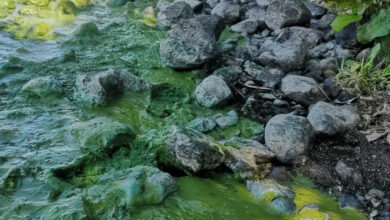Air quality in Northern Ireland


The fourteenth annual Northern Ireland air quality report, Air Pollution in Northern Ireland 2015, indicates that most air quality objectives for key pollutants were met in full. agendaNi details.
It is estimated that air pollution in the United Kingdom causes a 7-8 month reduction in life expectancy for each individual, accompanied by an associated cost of around £20 billion. The European Commission’s Air Quality Directives, as implemented through the Air Quality Standards Regulations (Northern Ireland) 2010, compel Executive departments to monitor levels of air pollutants (as specified), and ensure compliance with limit values for these pollutants.
EU member states are divided into zones for reporting purposes. In Northern Ireland there are two such zones: the combined Belfast Metropolitan Urban Area and the Northern Ireland zone (composed of the rest of the region).
Under the Environment Order (Northern Ireland) 2002, the Local Air Quality Management (LAQM) is the framework by which local councils manage air quality. Local government is obliged to analyse a range of air pollutants against Air Quality Strategy (AQS) objectives.
In 2015, continuous monitoring was conducted at 22 automated sites. Simultaneously, non-automatic monitoring techniques and diffusion tubes (low-cost, single-use samplers) supplemented this automatic monitoring. Eight specific batches of pollutants are monitored in Northern Ireland. These include:
- carbon monoxide;
- oxides of nitrogen (comprising nitric oxide and nitrogen dioxide);
- sulphur dioxide;
- particulate matter (including fine particulate matter and black carbon);
- ozone;
- benzene;
- polluting elements (lead, arsenic, cadmium, nickel and mercury); and
- polycyclic aromatic hydrocarbons.
Overall, due to legislation proactively enforcing tighter emissions controls, air quality has improved and concentrations of sulphur dioxide particularly have substantially declined over recent decades. EU limit and target values, as well as AQS objectives, were met for the following pollutants: particulate matter, carbon monoxide, benzene, sulphur dioxide and polluting elements. However, particular pollutants continue to exceed objectives.
Two sites, one at Stockman’s Lane in Belfast and another at Marlborough Street in Derry, breached the AQS target for mean annual nitrogen dioxide concentration. Both sites are located beside major roads. Similarly, while no sites exceeded the AQS objective for ozone, the pollutant has the potential to reach excessive levels in the future.
Where monitoring uncovers a decline in air quality below acceptable levels, there is a requirement to designate Air Quality Management Areas (AQMAs) and subsequently work alongside relevant authorities to produce Air Quality Action Plans. There are currently 26 AQMAs divided across nine of the 11 council areas. Of these areas, five have AQMAs for nitrogen dioxide alone, one for particulate matter alone and three for a combination of the two. The source of these pollutant levels is almost exclusively a result of road traffic. Only Fermanagh and Omagh and Ards and North Down councils do not have an AQMA.
Environment Minister Michelle McIlveen commented: “It is encouraging to note that the Air Pollution in Northern Ireland 2015 report shows a clear downward trend in air pollution at some key hotspots. My Department works closely with district councils and with other government departments to identify and reduce levels of air pollution and through our Local Air Quality Grant Scheme, we continue to support councils in their monitoring and assessment of local air quality.”





